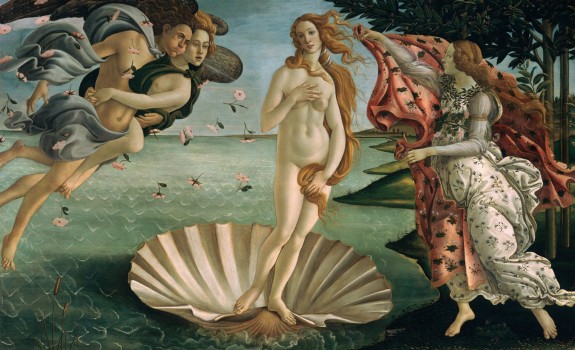The Medieval Art of the Western world covers a vast scope of time and place, over 1000 years of art in Europe, and at times the Middle East and North Africa. It includes major art movements and periods, national and regional art, genres, revivals, the artists crafts, and the artists themselves.
Art historians attempt to classify medieval art into major periods and styles, often with some difficulty. A generally accepted scheme includes Early Christian art, Migration Period art, Byzantine art, Insular art, Pre-Romanesque and Romanesque art, and Gothic art, as well as many other periods within these central styles. In addition each region, mostly during the period in the process of becoming nations or cultures, had its own distinct artistic style, such as Anglo-Saxon art or Norse art.
Medieval art was produced in many media, and the works that remain in large numbers include sculpture, illuminated manuscripts, stained glass, metalwork and mosaics, all of which have had a higher survival rate than other media such as fresco wall-paintings, work in precious metals or textiles, including tapestry. Especially in the early part of the period, works in the so-called “minor arts” or decorative arts, such as metalwork, ivory carving, enamel and embroidery using precious metals, were probably more highly valued than paintings or monumental sculpture.
Medieval art in Europe grew out of the artistic heritage of the Roman Empire and the iconographic traditions of the early Christian church. These sources were mixed with the vigorous “barbarian” artistic culture of Northern Europe to produce a remarkable artistic legacy. Indeed the history of medieval art can be seen as the history of the interplay between the elements of classical, early Christian and “barbarian” art. Apart from the formal aspects of classicism, there was a continuous tradition of realistic depiction of objects that survived in Byzantine art throughout the period, while in the West it appears intermittently, combining and sometimes competing with new expressionist possibilities developed in Western Europe and the Northern legacy of energetic decorative elements. The period ended with the self-perceived Renaissance recovery of the skills and values of classical art, and the artistic legacy of the Middle Ages was then disparaged for some centuries. Since a revival of interest and understanding in the 19th century it has been seen as a period of enormous achievement that underlies the development of later Western art.
The Early Renaissance time period in art falls between the end of the Middle Ages and the beginning of the High Renaissance (1400-1500). Early Renaissance art first developed in Florence of Central Italy in the fourteenth century when naturalistic styles and humanist theories were evolved from the study of classical sources. The artists of early Renaissance adopted classical values and the new philosophy of Humanism led directly to a series of changes in the creation of art – especially Italian architecture, painting and sculpture. Prominent Early Renaissance artists were people such as Masaccio, Donatello, Piero della Francesca, Perugino, Verrocchio, and Botticelli. Renaissance art marks the transition of Europe from the medieval period to the Early modern age. In many parts of Europe, Early Renaissance art was created in parallel with Late Medieval art.
Sandro Botticelli was an Italian painter of the Early Renaissance. He belonged to the Florentine School under the patronage of Lorenzo de’ Medici, a movement that Giorgio Vasari would characterize less than a hundred years later as a “golden age”, a thought, suitably enough, he expressed at the head of his Vita of Botticelli. Botticelli’s posthumous reputation suffered until the late 19th century; since then his work has been seen to represent the linear grace of Early Renaissance painting. Among his best known works are The Birth of Venus and Primavera.
Homework: Please watch my posted video and short articles about Jan van Eyck first. If you are interested in this artist, you may google more information related to the artist online further.
Jan van Eyck (Dutch: [ˈjɑn vɑn ˈɛik], (1390 – 1441) was an Early Netherlandish painter active in Bruges and one of the most significant Northern Renaissance artists of the 15th century. Van Eyck painted both secular and religious subject matter, including commissioned portraits, donor portraits and both large and portable altarpieces. He worked on panel, either as single panels, diptych, triptychs, or polyptychs. He was well paid by Philip, who sought that the painter was secure financially and thus had artistic freedom and could paint “whenever he pleased”. His work comes from the International Gothic style, but he soon eclipsed it, in part through a greater emphasis on naturalism and realism.
Van Eyck utilized a new level of virtuosity, mainly through the use of oil as a medium; the fact that oil dries so slowly allowed him more time and more scope for blending and mixing layers of different pigments. He was highly influential and his techniques and style were quickly adopted and refined by Robert Campin and Rogier van der Weyden and later generations of Early Netherlandish painters.
The improvement of oil paint and developments in oil-painting technique by Netherlandish artists such as Jan van Eyck, Rogier van der Weyden and Hugo van der Goes led to its adoption in Italy from about 1475 and had ultimately lasting effects on painting practices, worldwide.

